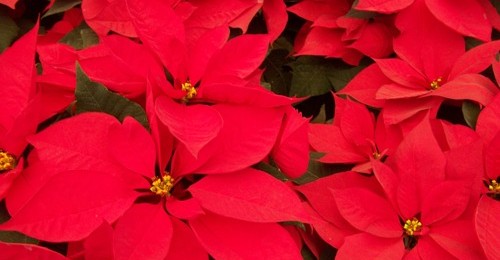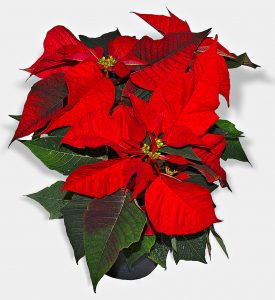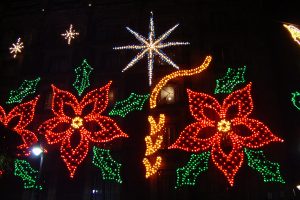Vanilla
Vanilla is a flavoring derived from orchids of the genus Vanilla, from the Mexican species, flat-leaved vanilla (V. planifolia). The word vanilla, derived from vainilla, the diminutive of the Spanish word vaina (vaina itself meaning sheath or pod), is translated simply as "little pod".[1] Pre-Columbian Mesoamerican people cultivated the vine of the vanilla orchid, called tlilxochitl by the Aztecs. Spanish conquistador Hernán Cortés is credited with introducing both vanilla and chocolate to Europe in the 1520s.

Three major species of vanilla currently are grown globally, all of which derive from a species originally found in Mexico. They are V. planifolia (syn. V. fragrans), grown on Madagascar, Réunion, and other tropical areas along the Indian Ocean; V. tahitensis, grown in the South Pacific; and V. pompona, found in the West Indies, and Central and South America.[7] The majority of the world's vanilla is the V. planifolia species, more commonly known as Bourbon vanilla (after the former name of Réunion, Île Bourbon) or Madagascar vanilla, which is produced in Madagascar and neighboring islands in the southwestern Indian Ocean, and in Indonesia.[8][9]
Vanilla is the second-most expensive spice after saffron,[10][11] because growing the vanilla seed pods is labor-intensive.[11] Despite the expense, vanilla is highly valued for its flavor.[12] As a result, vanilla is widely used in both commercial and domestic baking, perfume manufacture, and aromatherapy.
According to popular belief, the Totonac people, who inhabit the east coast of Mexico in the present-day state of Veracruz, were the first to cultivate vanilla.[13] According to Totonac mythology, the tropical orchid was born when Princess Xanat, forbidden by her father from marrying a mortal, fled to the forest with her lover. The lovers were captured and beheaded. Where their blood touched the ground, the vine of the tropical orchid grew.[4] In the 15th century, Aztecs invading from the central highlands of Mexico conquered the Totonacs, and soon developed a taste for the vanilla pods. They named the fruit tlilxochitl, or "black flower", after the matured fruit, which shrivels and turns black shortly after it is picked. Subjugated by the Aztecs, the Totonacs paid tribute by sending vanilla fruit to the Aztec capital, Tenochtitlan.
Until the mid-19th century, Mexico was the chief producer of vanilla.[14] In 1819, French entrepreneurs shipped vanilla fruits to the islands of Réunion and Mauritius in hopes of producing vanilla there. After Edmond Albius discovered how to pollinate the flowers quickly by hand, the pods began to thrive. Soon, the tropical orchids were sent from Réunion to the Comoros Islands, Seychelles, and Madagascar, along with instructions for pollinating them. By 1898, Madagascar, Réunion, and the Comoros Islands produced 200 metric tons of vanilla beans, about 80% of world production. According to the United Nations Food and Agriculture Organisation, Indonesia is currently responsible for the vast majority of the world's Bourbon vanilla production[15] and 58% of the world total vanilla fruit production.
The market price of vanilla rose dramatically in the late 1970s after a tropical cyclone ravaged key croplands. Prices remained high through the early 1980s despite the introduction of Indonesian vanilla. In the mid-1980s, the cartel that had controlled vanilla prices and distribution since its creation in 1930 disbanded.[16] Prices dropped 70% over the next few years, to nearly US$20 per kilogram; prices rose sharply again after tropical cyclone Hudah struck Madagascar in April 2000. The cyclone, political instability, and poor weather in the third year drove vanilla prices to an astonishing US$500/kg in 2004, bringing new countries into the vanilla industry. A good crop, coupled with decreased demand caused by the production of imitation vanilla, pushed the market price down to the $40/kg range in the middle of 2005. By 2010, prices were down to $20/kg. Cyclone Enawo caused in similar spike to $500/kg in 2017.[17]
Vanilla was completely unknown in the Old World before Cortés. Spanish explorers arriving on the Gulf Coast of Mexico in the early 16th century gave vanilla its current name. Spanish and Portuguese sailors and explorers brought vanilla into Africa and Asia later that century. They called it vainilla, or "little pod". The word vanilla entered the English language in 1754, when the botanist Philip Miller wrote about the genus in his Gardener’s Dictionary.[19] Vainilla is from the diminutive of vaina, from the Latin vagina (sheath) to describe the shape of the pods.[20]
Vanilla grows best in a hot, humid climate from sea level to an elevation of 1,500 m. The ideal climate has moderate rainfall, 1,500–3,000 mm, evenly distributed through 10 months of the year. Optimum temperatures for cultivation are 15–30 °C (59–86 °F) during the day and 15–20 °C (59–68 °F) during the night. Ideal humidity is around 80%, and under normal greenhouse conditions, it can be achieved by an evaporative cooler. However, since greenhouse vanilla is grown near the equator and under polymer (HDPE) netting (shading of 50%), this humidity can be achieved by the environment. Most successful vanilla growing and processing is done in the region within 10 to 20° of the equator.
Vanilla
Vanilla is a flavoring derived from orchids of the genus Vanilla, from the Mexican species, flat-leaved vanilla (V. planifolia). The word vanilla, derived from vainilla, the diminutive of the Spanish word vaina (vaina itself meaning sheath or pod), is translated simply as "little pod".[1] Pre-Columbian Mesoamerican people cultivated the vine of the vanilla orchid, called tlilxochitl by the Aztecs. Spanish conquistador Hernán Cortés is credited with introducing both vanilla and chocolate to Europe in the 1520s.
Click here to view the original image of 700x700px.
Three major species of vanilla currently are grown globally, all of which derive from a species originally found in Mexico. They are V. planifolia (syn. V. fragrans), grown on Madagascar, Réunion, and other tropical areas along the Indian Ocean; V. tahitensis, grown in the South Pacific; and V. pompona, found in the West Indies, and Central and South America.[7] The majority of the world's vanilla is the V. planifolia species, more commonly known as Bourbon vanilla (after the former name of Réunion, Île Bourbon) or Madagascar vanilla, which is produced in Madagascar and neighboring islands in the southwestern Indian Ocean, and in Indonesia.[8][9]
Vanilla is the second-most expensive spice after saffron,[10][11] because growing the vanilla seed pods is labor-intensive.[11] Despite the expense, vanilla is highly valued for its flavor.[12] As a result, vanilla is widely used in both commercial and domestic baking, perfume manufacture, and aromatherapy.
According to popular belief, the Totonac people, who inhabit the east coast of Mexico in the present-day state of Veracruz, were the first to cultivate vanilla.[13] According to Totonac mythology, the tropical orchid was born when Princess Xanat, forbidden by her father from marrying a mortal, fled to the forest with her lover. The lovers were captured and beheaded. Where their blood touched the ground, the vine of the tropical orchid grew.[4] In the 15th century, Aztecs invading from the central highlands of Mexico conquered the Totonacs, and soon developed a taste for the vanilla pods. They named the fruit tlilxochitl, or "black flower", after the matured fruit, which shrivels and turns black shortly after it is picked. Subjugated by the Aztecs, the Totonacs paid tribute by sending vanilla fruit to the Aztec capital, Tenochtitlan.
Until the mid-19th century, Mexico was the chief producer of vanilla.[14] In 1819, French entrepreneurs shipped vanilla fruits to the islands of Réunion and Mauritius in hopes of producing vanilla there. After Edmond Albius discovered how to pollinate the flowers quickly by hand, the pods began to thrive. Soon, the tropical orchids were sent from Réunion to the Comoros Islands, Seychelles, and Madagascar, along with instructions for pollinating them. By 1898, Madagascar, Réunion, and the Comoros Islands produced 200 metric tons of vanilla beans, about 80% of world production. According to the United Nations Food and Agriculture Organisation, Indonesia is currently responsible for the vast majority of the world's Bourbon vanilla production[15] and 58% of the world total vanilla fruit production.
The market price of vanilla rose dramatically in the late 1970s after a tropical cyclone ravaged key croplands. Prices remained high through the early 1980s despite the introduction of Indonesian vanilla. In the mid-1980s, the cartel that had controlled vanilla prices and distribution since its creation in 1930 disbanded.[16] Prices dropped 70% over the next few years, to nearly US$20 per kilogram; prices rose sharply again after tropical cyclone Hudah struck Madagascar in April 2000. The cyclone, political instability, and poor weather in the third year drove vanilla prices to an astonishing US$500/kg in 2004, bringing new countries into the vanilla industry. A good crop, coupled with decreased demand caused by the production of imitation vanilla, pushed the market price down to the $40/kg range in the middle of 2005. By 2010, prices were down to $20/kg. Cyclone Enawo caused in similar spike to $500/kg in 2017.[17]
Vanilla was completely unknown in the Old World before Cortés. Spanish explorers arriving on the Gulf Coast of Mexico in the early 16th century gave vanilla its current name. Spanish and Portuguese sailors and explorers brought vanilla into Africa and Asia later that century. They called it vainilla, or "little pod". The word vanilla entered the English language in 1754, when the botanist Philip Miller wrote about the genus in his Gardener’s Dictionary.[19] Vainilla is from the diminutive of vaina, from the Latin vagina (sheath) to describe the shape of the pods.[20]
Vanilla grows best in a hot, humid climate from sea level to an elevation of 1,500 m. The ideal climate has moderate rainfall, 1,500–3,000 mm, evenly distributed through 10 months of the year. Optimum temperatures for cultivation are 15–30 °C (59–86 °F) during the day and 15–20 °C (59–68 °F) during the night. Ideal humidity is around 80%, and under normal greenhouse conditions, it can be achieved by an evaporative cooler. However, since greenhouse vanilla is grown near the equator and under polymer (HDPE) netting (shading of 50%), this humidity can be achieved by the environment. Most successful vanilla growing and processing is done in the region within 10 to 20° of the equator.



 Click
Click 


 Poinsettias are widely featured in this amazing display!
Poinsettias are widely featured in this amazing display!